Shock absorption in running shoes
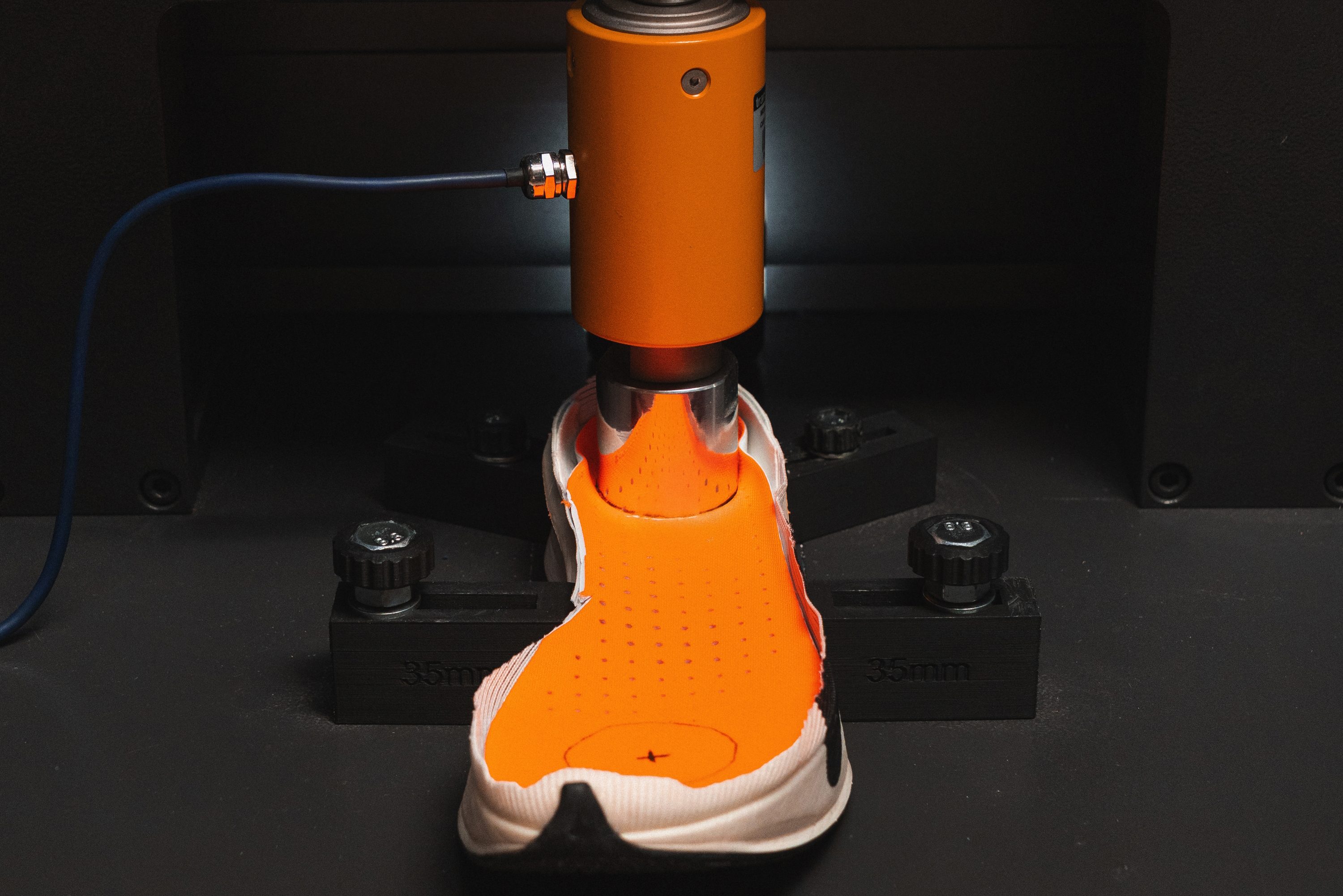
Shock absorption refers to a shoe’s ability to reduce and spread out the impact forces that hit your body with every footstrike. When running, each step can create forces up to 3 times your body weight, leading to muscle fatigue and more stress on bones and joints. That’s why many modern shoes focus on improving shock absorption.
It’s true that shock absorption it’s often mentioned alongside energy return, but the two are very different. A highly cushioned shoe might soak up impact well (high shock absorption) without giving much bounce back. Energy return is about how much of that impact is stored and pushed forward to help with your next step. In fact, a shoe can feel ultra-protective but lack rebound like the New Balance Fresh Foam X More v5, or deliver plenty of spring without much cushioning, as seen in the Nike Streakfly 2.
The sweet spot for many runners is a model that dampens harsh impact while staying responsive underfoot. But not every runner needs the same setup, because a lightweight individual doing short runs won’t need as much impact protection as a 90-kg marathoner doing long tempo workouts. Different forces mean different cushioning needs.
How shock absorption should guide your next running shoe purchase
While some brands keep pushing the idea that more cushioning is always better, we strongly disagree. It’s a very different story from energy return, where having more is usually a good thing—probably 9 out of 10 times. With shock absorption, though, we believe it’s closer to a 50/50 split.
When to go for high shock absorption in a running shoe
Runners covering longer distances benefit the most from maximalist running shoes with super-high shock absorption, since their legs take far more pounding with each passing mile compared to those running shorter sessions. Also, most marathoners should consider a supershoe with strong shock absorption for race day. Feeling fresher by mile 20 can be the difference between hitting the wall or finishing strong, and your post-race recovery will thank you too.
Another group that gains a lot from high-SA shoes includes runners dealing with joint issues. For instance, those with a torn labrum or recurring bone stress injuries need to minimize impact as much as possible to stay pain-free and keep training.
We also found that beginners using running to lose weight should look for extra cushioning. Their muscles and bones aren’t yet conditioned for the repetitive impact, so reducing shock is essential to avoid injuries and stay consistent. While factors like stability matter too, here we’re focusing solely on how the midsole helps absorb impact.
When to go for moderate shock absorption in a running shoe
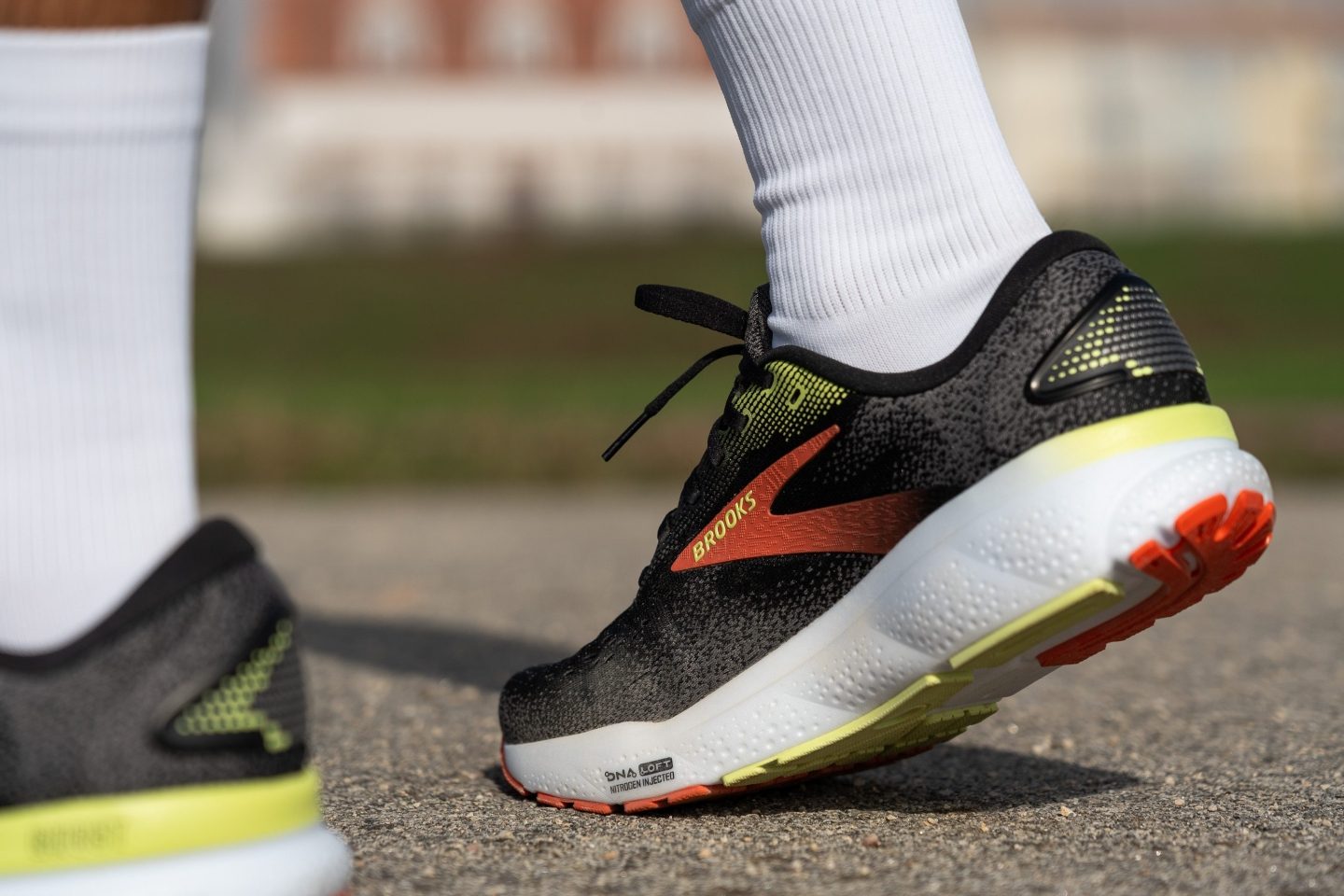
The running world looks a lot like a bell curve. A small number of runners are extremely fast, another small group is very slow, and the vast majority fall somewhere in between. This curve also helps explain why most workouts tend to sit in the mid-range of distances for daily runs, like 10K or 12K. Unlike short 5K efforts that don’t demand much cushioning, or 20-milers where shock absorption becomes critical, these middle distances call for more balanced protection.
That’s why for most runners, a shoe with moderate shock absorption is probably the safest bet. It offers just enough impact protection without feeling overly bulky or weighed down underfoot. And they tend to be easier on the wallet too.
Daily trainers like the Nike Pegasus 41 (125 SA) or the Brooks Ghost 16 (133 SA) fall right in this sweet spot. These models are often the go-to recommendation in running stores for good reason.
So if you’re an injury-free runner, not on the extremes of height or weight, and logging average distances, a mid-level SA shoe likely delivers the best mix of comfort and versatility with minimal trade-offs.
When to go for low shock absorption in a running shoe
These models offer better ground feel, which can enhance proprioception and improve foot control with every stride. And they're super fun to ride!
We’ve seen that shoes with low-SA midsoles tend to promote natural movement and activate more muscles in the foot and lower leg. This can lead to stronger feet over time, especially for runners who transition carefully and use them for strength-building sessions or drills. Some even rotate low-cushion shoes into their weekly plan to simulate barefoot mechanics without going fully barefoot.

Low-SA shoes can also be useful in injury rehab, especially for conditions where overprotection leads to muscle deactivation. For example, some Achilles or plantar issues may benefit from reintroducing impact gradually, and a less cushioned platform helps build tolerance and control.
While they’re not ideal for long races or high-impact runners, low shock absorption shoes have a clear role in building foot strength, improving proprioception, and reconnecting with more natural running mechanics.
Finally, for short-distance road racing like the mile or 5K, low shock absorption shoes can actually give you an edge. These midsoles provide quicker ground contact and better energy transfer, and usually less weight. With less cushioning in the way, you feel more connected to the ground, which can improve cadence and running efficiency. A good example of this would be picking the Nike Streakfly 2 (106 SA / 128g) versus the Nike Vaporfly 4 (137 SA / 166g).
Perception vs reality in shock absorption

It’s important to remember that perceived cushioning and measured shock absorption can be very different. Some shoes feel soft when you first try them on due to low foam hardness but quickly bottom out under impact, meaning they may not reduce peak forces for high-impact runners. Others, like the ASICS Superblast, feel on the firmer end yet offer excellent impact attenuation.
That’s why you shouldn’t rely solely on step-in feel or biased shoe reviews. Instead, check the shoe’s SA score from our shock absorption test. While no number from our lab can perfectly predict how a shoe will feel for you, it does provide a clear measure of how much impact dampening it offers compared to similar models.
Shock absorption reduces running injuries?
The original Nike Cortez from 1972 introduced a thin layer of EVA foam, an innovation that was groundbreaking at the time. And one of the most noticeable shifts it brought was a change in injury patterns among runners.
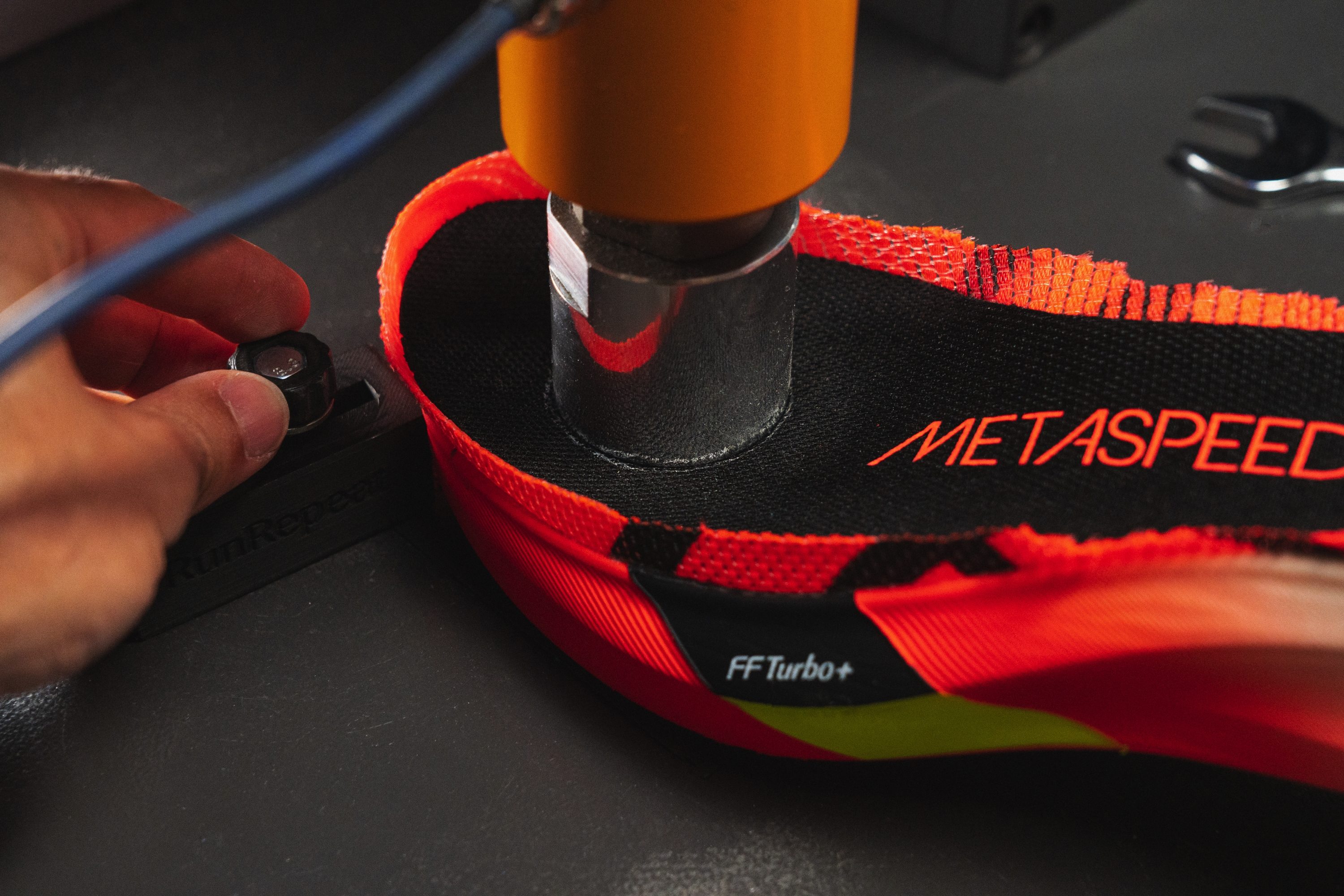
More than 50 years later, EVA is still going strong despite the advancement of new materials. In fact, most running shoes released this year use it, but now in thicker, more cushioned layers that offer better protection underfoot and are «easier on the joints» as you can read in some reviews. That long-lasting presence highlights just how critical shock absorption is in the evolution of running shoes.
Several studies have explored whether softer midsoles and higher shock absorption can reduce injury risk. In 2020, a randomized controlled trial involving 848 runners found that those wearing firmer shoes were 52% more likely to get injured. Even more interesting, lighter runners showed the greatest benefit, suggesting that added cushioning may help across different body types.
Still, personal experience matters, and that’s one of the key things that we encourage you to remember when choosing running shoes. While science often leans one way, some runners do better in the opposite setup. That’s why minimalist shoes and barefoot running continue to work awesome for certain people… it’s all about finding what suits your body and running style.
But, can too much cushioning cause injuries?
One reason shock absorption isn't always a clear win is that the body naturally adapts its mechanics like it does with everything in life. With very soft shoes, runners often stiffen their legs, reducing knee flexion and absorbing less through the joints. A 2018 study by Kulmala et al. showed that in maximalist shoes, runners actually experienced 10–12% higher impact forces at faster speeds (14.5 km/h) compared to traditional models. Even at slower speeds (10 km/h), impact was still about 6% higher in the highly cushioned shoe!
Another factor is proprioception, which is the body’s ability to sense foot placement. Thick shoes can dull this sensation and disconnect the runner from the ground. A 2024 study from the University of Florida found that runners using highly-cushioned shoes were more likely to get injured than those in flatter designs.

In short, while cushioning reduces direct impact, it can sometimes lead to harder landings or less precise foot control. Like driving a car with overly soft suspension, it might feel smooth most times, but you lose most of your connection to the road.
From our side, it’s clear that increased shock absorption can help reduce muscle soreness and day-to-day fatigue, but it may also lead to new issues in certain cases. For example, a runner with stability issues shouldn’t go for a max-cushion neutral shoe, as too much softness without support can quickly trigger problems like the infamous runner’s knee. It really comes down to common sense.
Does cold temperatures reduce shock absorption in running shoes?

We used the same group of shoes we tested for energy return at both room (22ºC) and freezing temperatures (35 minutes at -15ºC) to get a complete comparison. And the results really caught our attention.
Unlike energy return, where premium foams like PEBA or A-TPU kept their bounce far better than standard EVA, shock absorption dropped by a similar amount across the board regardless of the compound. For example, the Vaporfly 4 lost 36% of its shock absorption, while the Pegasus 41 lost 38%. But when we look at energy return, the Vaporfly 4 had just a 3.4% drop, compared to a massive 29.1% decrease in the Pegasus 41. Interesting, right?
Well, the thing is that energy return and shock absorption rely on different foam behaviors. Energy return depends on elasticity (how well the foam rebounds after compression) and premium foams keep that bounce even in the cold, thanks to their super-elastic structure. Shock absorption, however, requires the foam to deform and soften the landing. In freezing temperatures, all foams stiffen, reducing their ability to cushion impact. That’s why PEBA maintains energy return but still loses shock absorption, as cold reduces softness and damping… even if the foam can still spring back efficiently.
| Shoe | Foam type | Shock Ab. | Shock Ab. (Cold) | Change |
| Adidas Adios Pro 4 | Premium | 142 | 112 | -21% |
| Brooks Hyperion Elite 4 PB | Premium | 148 | 103 | -30% |
| Saucony Endorphin Elite | Premium | 145 | 119 | -18% |
| Nike Vaporfly 4 | Premium | 137 | 88 | -36% |
| ASICS Metaspeed Sky+ | Premium | 130 | 99 | -24% |
| ASICS Gel Kayano 31 | Standard | 131 | 85 | -35% |
| Hoka Bondi 9 | Standard | 146 | 94 | -36% |
| Nike Pegasus 41 | Standard | 125 | 78 | -38% |
| Brooks Adrenaline GTS 24 | Standard | 121 | 85 | -30% |
| Adidas Galaxy 6 | Standard | 111 | 66 | -41% |
Squeezing the data from our lab
We’ve tested hundreds of shoes for shock absorption in the lab, which gives us the chance to uncover some interesting insights about it—whether it’s clearing up common misconceptions or confirming popular beliefs.
Shock absorption and midsole softness

It’s easy to assume these two variables should be strongly correlated, and while there’s a general trend where softer midsoles (lower HA) tend to deliver higher shock absorption, the relationship is far from perfect.
But look at that large cluster in the middle. Many shoes with moderate softness (15–25 HA) show a wide range of shock absorption, from as low as 100 SA to well over 150 SA. This makes it clear to us that softness alone doesn’t define impact protection, as other factors like stack height, foam formulation, or platform width play a big role.
If you look closely, you’ll also notice a few outliers. Some shoes with firm midsoles (over 30 HA) still manage decent shock absorption due to increased midsole thickness, while others with very soft foams end up offering only average results.
Shock absorption and stack height

We just mentioned that stack height plays a role, so let's dive into that. This chart shows a clear and strong positive correlation between heel stack height and shock absorption (SA). As expected, taller midsoles generally provide better impact protection. In fact, most maximalist shoes with heel stacks above 40 mm consistently score over 135 SA, while those under 30 mm rarely break 120 SA.
In contrast to the softness comparison, this chart shows a much stronger and more linear relationship, reinforcing that midsole height is one of the most reliable predictors of how much cushioning a shoe can deliver on impact.
Shock absorption and energy return
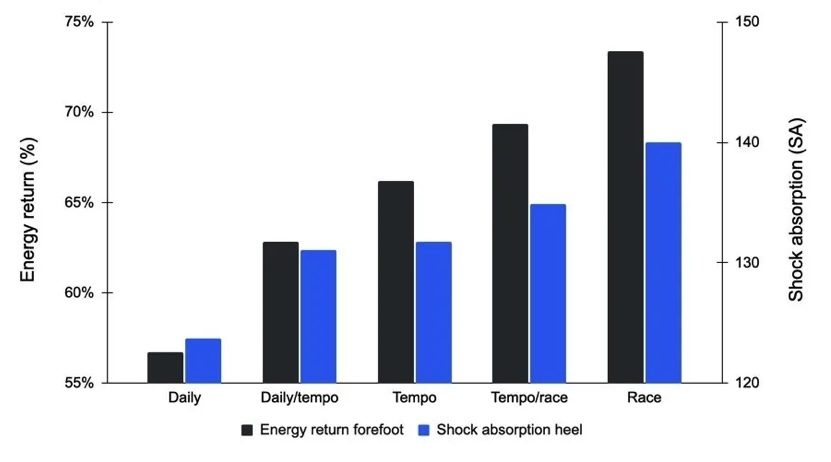
This chart highlights a clear trend across shoe categories: as shoes shift from daily trainers to race-day models, both energy return and shock absorption increase.
However, the rate changes quite a bit. Forefoot energy return (black bars) shows a sharp and consistent rise, climbing from 57% in daily trainers to nearly 73% in racing shoes. This reflects the focus on propulsion in faster shoes, with superfoams and carbon plates playing a key role.
Shock absorption in the heel (blue bars) also increases, but more gradually, from 125 SA in daily shoes to 141 SA in race models. This suggests that while brands are prioritizing energy return in race shoes, they still understand the importance of impact protection.

But we wanted to dig a bit deeper into the relationship between shock absorption and energy return, so instead of breaking it down by shoe category, we plotted all shoes together again.
What we found is a slight positive correlation between forefoot energy return and heel shock absorption. Some shoes with over 70% energy return still score below 130 SA (e.g: 5K or 10K race models as the Nike Streakfly 2) while others with modest bounce exceed 140 SA, like thick-heeled, EVA-based maximalist shoes.
Once again, this reinforces what we’ve been saying: energy return and shock absorption are quite different. One is about rebound, the other about impact reduction... and a shoe can be great at one without excelling at the other.
Shock absorption and retail price
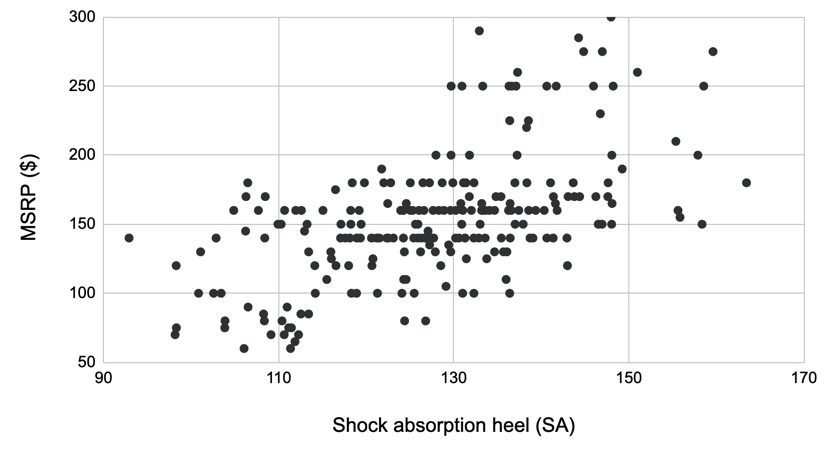
In general, shoes with higher shock absorption tend to be more expensive, that's clear to us. Most models scoring above 140 SA are priced over $180, and many of them cross the $200 mark, pointing toward premium foams or plated midsoles often used in high-end shoes like the Adidas Adizero Prime X 2 Strung.
However, the spread below 130 SA is much wider. Some shoes in this range still cost over $150, while others dip well below 100 bucks. This shows that shock absorption alone doesn’t dictate price; brand positioning and materials also play a role, as we've seen with On running shoes, which are often more expensive than more cushioned alternatives.
We also noticed a clear price ceiling around $160 for models with moderate SA, while shoes offering top-tier shock absorption tend to land in higher price brackets.
Shock absorption and shoe weight
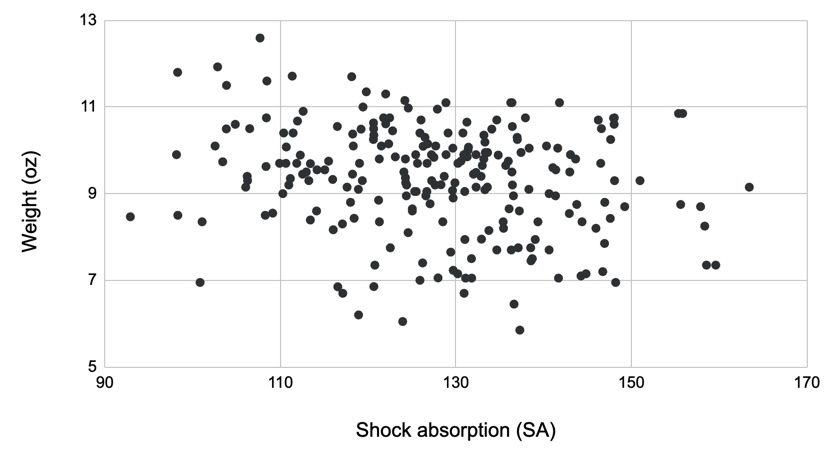
Our final chart today shows that shock absorption and weight aren’t strongly correlated. While it might seem logical that more cushioning means heavier shoes, the data tells a different story. That’s exactly why analyzing hundreds of running shoes and having consistent, comparable data is so important.
There’s a wide spread across the entire shock absorption range. Some models with over 140 SA are lightweight (mostly supertrainers like the Nike Zoom Fly 6) while others under 120 SA go beyond 11 oz, typically budget daily trainers like the Adidas Galaxy 6. This clearly shows that modern foams allow brands to build ultra-cushioned shoes without adding much weight.
The relationship between supershoes and shock absorption

Supershoes definitely help cut race times thanks to their high energy return, but shock absorption plays a big role too. And it’s not just about race day. During training, better impact protection allows runners to protect their legs, which helps increase weekly mileage and extend the length or intensity of quality sessions.
That’s possible because modern foams like PEBA or A-TPU are ultra-lightweight and airy, so brands can now deliver exceptional shock absorption without adding bulk. Just look at the Hoka Cielo X1 2.0, it reaches 160 SA while weighing only 208g, thanks to its PEBA midsole. In contrast, the Hoka Carbon X 3, built with EVA, hits only 118 SA and weighs 239g. The difference is huge!
An interesting experiment had runners complete two interval workouts a week apart—one in Nike Vaporfly and another in regular trainers. With the supershoe, they ran about 2% faster and felt less muscle soreness 24 hours later. This shows that superfoams don’t just boost race performance, they can also lead to more productive training sessions.
To sum up, shock absorption can enhance endurance and performance by reducing the toll on your body. Especially in longer runs or marathon events, a cushioned shoe helps you finish with better form and less slowdown.
Beyond foam: Other ways running shoes absorb impact
Foam is the main ingredient of running shoes thanks to its impact-dampening properties. But some brands have ventured into alternatives to improve shock absorption (and energy return) in running shoes.
Nike Air
The most well-known alternative to foam is Nike Air, available in different forms like Air Pods in the Alphafly 3, full-length Air Zoom units in the new Pegasus Premium, smaller units in the Pegasus 41, or full-length Air units like in the Winflo 11.
Nike basically patented in 1977 a method to pressurize air inside a capsule and released the Tailwind in 1978, boosting both rebound and cushioning. This innovation made a big splash when it launched, and since it’s protected, no other brand has been able to introduce anything similar.
Looking ahead, it’s clear that Air remains a key part of Nike’s strategy, already featured in prototypes of their upcoming running shoes.
ASICS GEL
While Nike’s Air units are mainly designed for energy return, they still provide good cushioning. In contrast, ASICS’ GEL technology does the opposite—offering minimal bounce but comfort. Because of this, it’s generally reserved for shoes that don’t prioritize performance.
We’ve seen this tech for decades in models like the Nimbus (up to the 25th version) and the Kayano. A few years ago, ASICS introduced PureGEL—a lighter upgrade that’s fully embedded in the midsole and no longer visible from the outside.
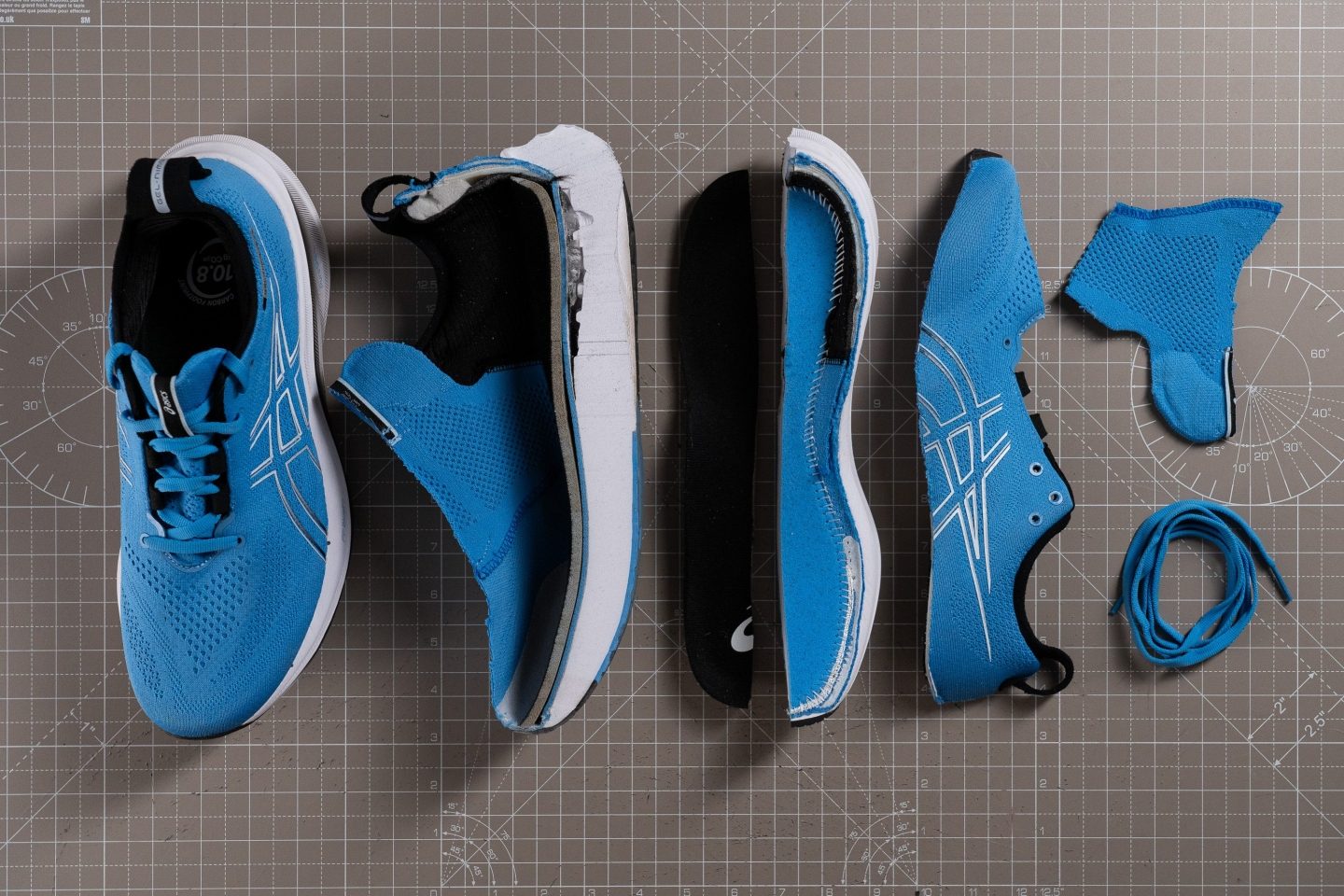
Although Gel isn’t going away for now, we believe it’s being phased out of high-performance models. Premium shoes like the Superblast 2 skip it entirely, showing that Gel is more of a comfort-only feature.
Insoles and outsoles
While most of the attention goes to the foam in the midsole, it’s important to remember that both the insole and outsole also play a role in cushioning. Simply put—everything beneath your foot contributes to how the shoe absorbs impact from the ground.
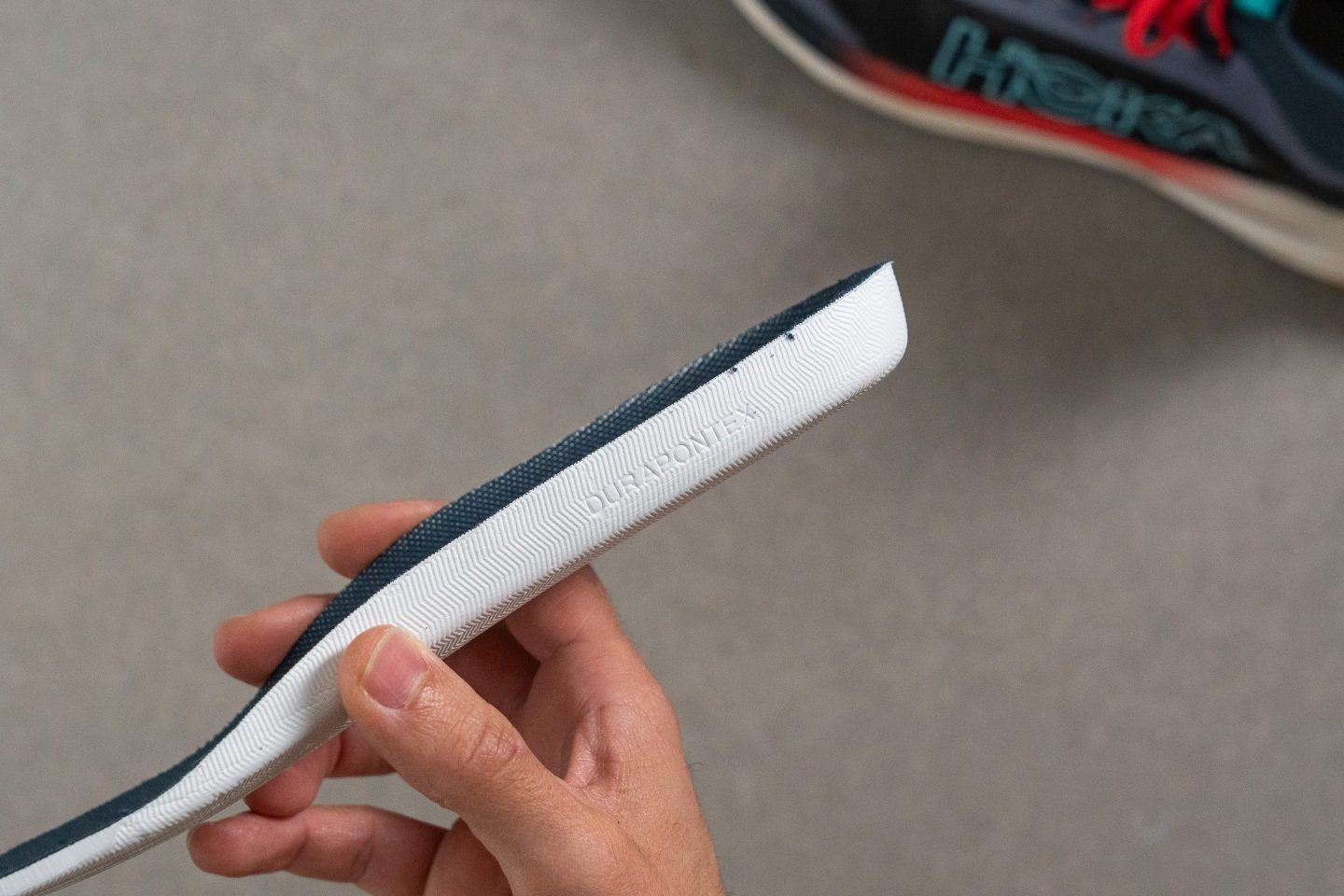
Insoles, typically 4 to 6 mm thick, can add a noticeable layer of softness. Some supershoes use ultra-thin insoles to stay under the 40 mm stack height limit set by World Athletics, while others—like certain Saucony models—feature extra-thick insoles to boost step-in comfort.
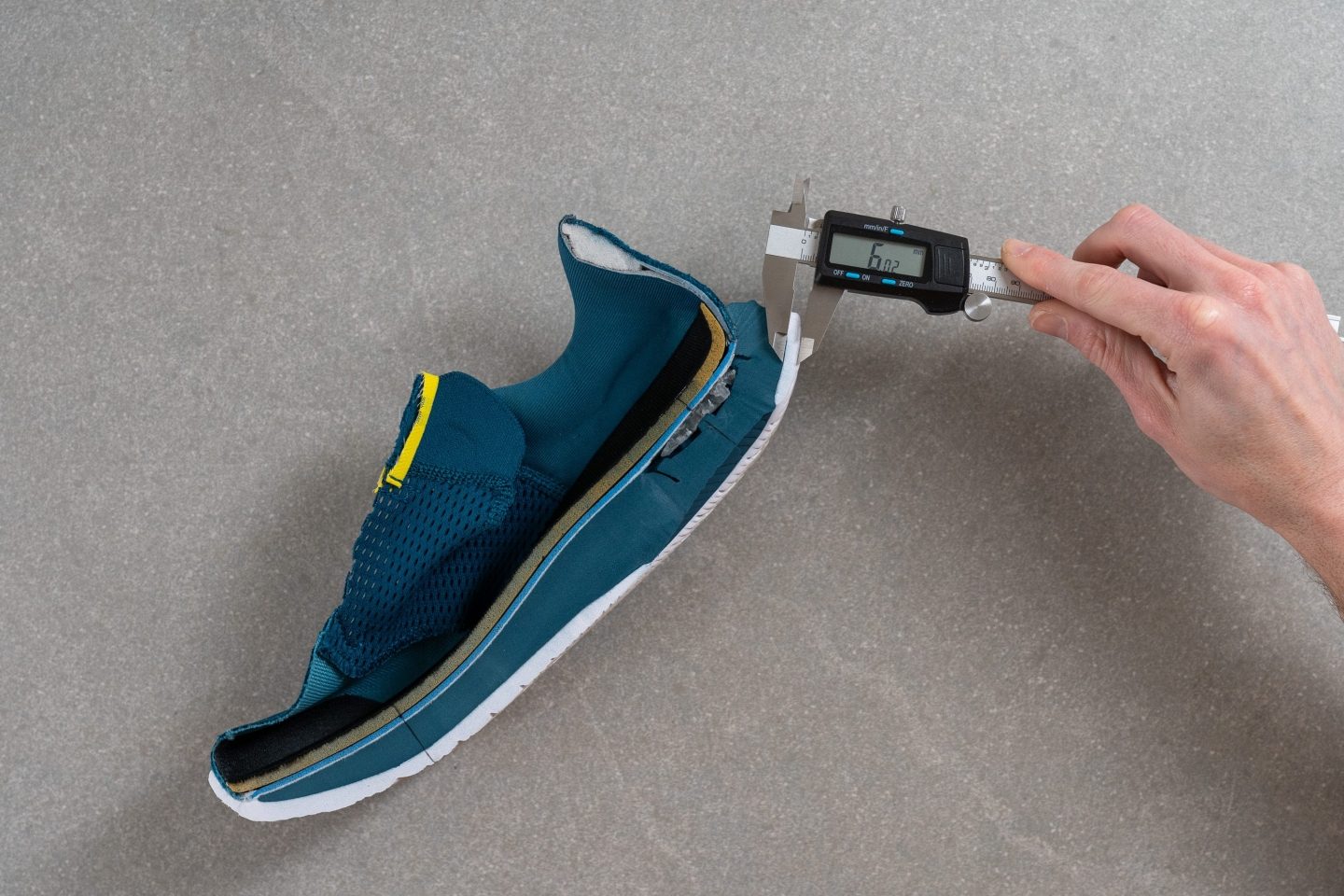
Outsoles contribute less, as they’re usually made from firm rubber built for durability. Still, soft rubber compounds—often seen in supershoes—can help absorb small amounts of impact. We’ve also tested models with rubberized foam outsoles, like the ASICS Gel Cumulus 26, which offer a more forgiving landing feel but sacrifice long-term durability.
Other cushioning systems that didn’t make it to today
During the 1980s and 1990s, several brands explored unique alternatives to traditional foam cushioning. Saucony introduced GRID, a plastic web under the heel to disperse impact forces. Brooks experimented with HydroFlow, using silicone liquid pads similar to ASICS GEL, while New Balance used ENCAP.
Reebok’s ERS, or Energy Return System, launched in 1988 as one of the coolest cushioning concepts of its time. Instead of relying on foam alone, ERS featured spring-like fiberglass cylinders embedded in the heel. These hollow rods were designed to compress on impact and then rebound.
It was an early and brave attempt to introduce true mechanical energy return into running shoes, well before carbon plates and superfoams like PEBA and A-TPU. While the idea was amazing, ERS added too much complexity and weight.
From minimalism to maximalism
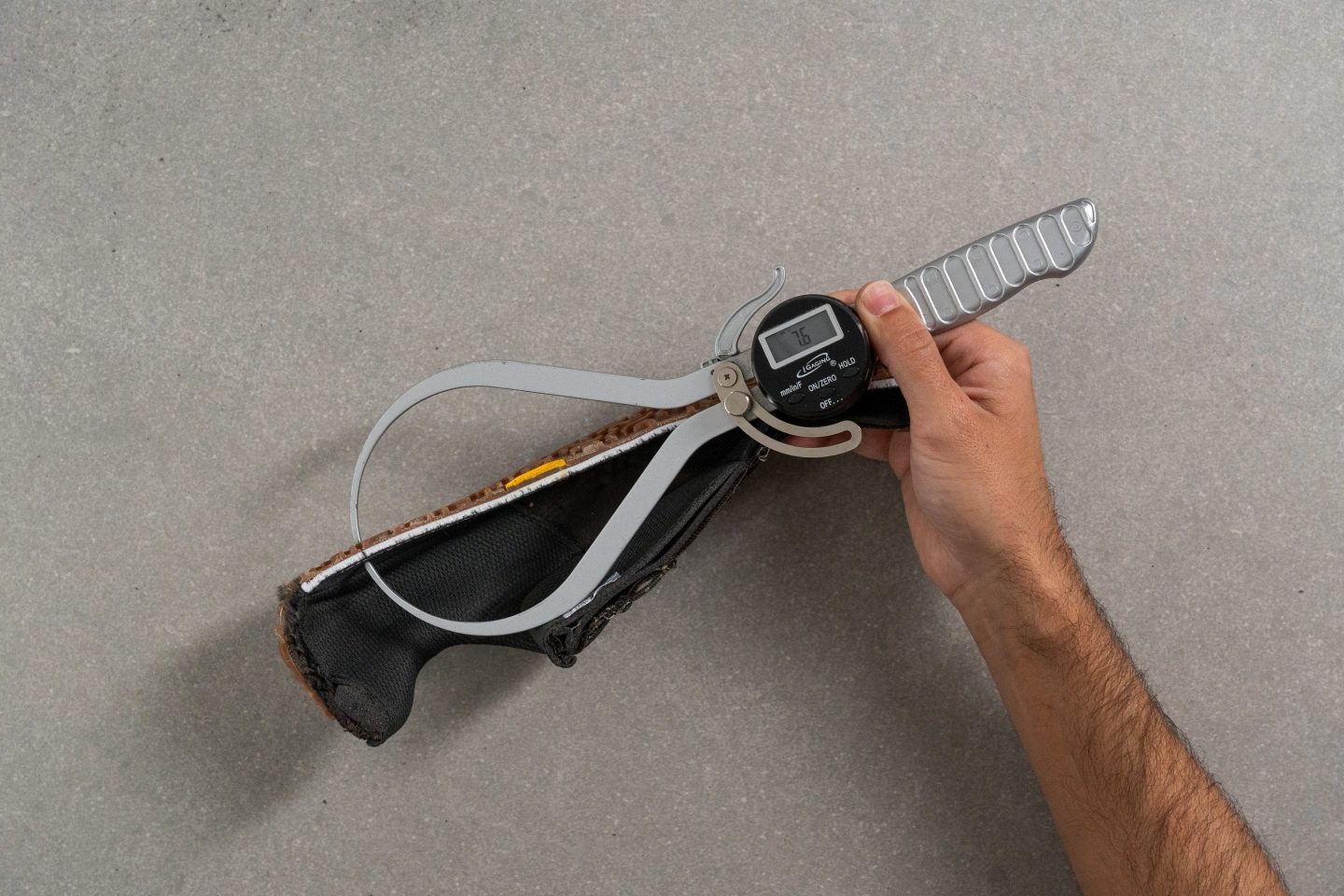
The 2010s were a fascinating period, sparked by the book Born to Run, which ignited the minimalist running trend. The Vibram FiveFingers became its most iconic symbol, and some models like the Merrell Vapor Glove 6 have even made it to our lab for testing due to its popularity.
While minimalism has its strengths, it’s probably not ideal for serious running or beginners in the sport. That reality pushed the market slowly toward thicker soles, especially after the release of the Adidas Ultraboost in 2015 and the global rise of Hoka (then called Hoka One One) as a brand in that decade.
Should brands put a cap on rising stack heights?
We think it’s time to pause. There’s no exact formula to define when cushioning becomes excessive, but we’ve reached a point where no one is bottoming out in today’s maximalist shoes like the ASICS Novablast 5, so adding more foam may actually be counterproductive.
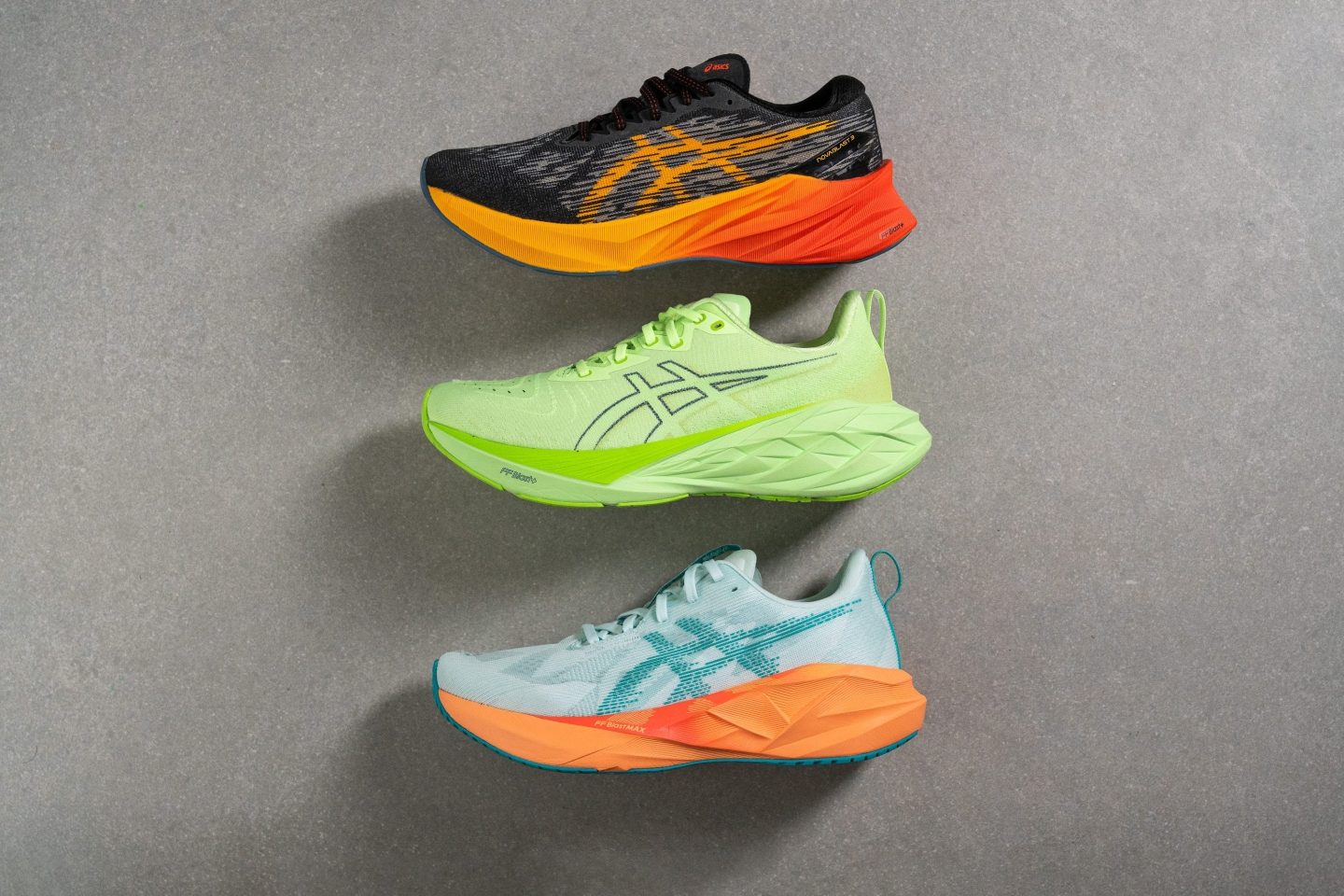
Take Hoka, for example, the brand that really helped drive the maximalist trend. The Clifton 9 launched with a heel stack of 32.7 mm and 127 SA of shock absorption, which felt huge at the time. Two years later, the Clifton 10 arrived with a towering 44.4 mm heel and 147 SA. That’s a massive jump, and in our view, going for 50 mm in version 11 makes no sense at all.
And it’s not just Hoka. The ASICS Novablast 5 now reaches 40.9 mm in the heel with 141 SA, surpassing the legal limit for supershoes used on race day. Meanwhile, the Nike Vomero 18 stands at 42.5 mm, up from 33.9 mm in the previous version.
What we learned after maximalism became the ultimate trend
One of the best things about minimalist running shoes was how simple and natural everything felt. But with the rise of maximalism, a lot has changed.

For example, footstrike patterns have shifted, and most runners are now landing on their heels. Just think about running barefoot—you naturally land on your forefoot. But throw on a highly cushioned shoe, and suddenly heel striking becomes the default for many runners.
We also found that rotating running shoes is essential. We covered this in our foams guide, so here’s the short version: if you run everyday in the same pair, the foam doesn’t fully recover. Over time, you’ll likely notice a drop in shock absorption or softness as the material breaks down.
Finally, the industry adapted by building neutral shoes with subtle stability features, like raised midsole sidewalls or extra-wide platforms in the heel and forefoot. These design tweaks became necessary as stack heights climbed past 40 mm. So yes, most maximalist models now behave like light stability shoes.
Trail shoes and the shock absorption dilemma
The road running shoe market usually leads the trail segment by a year or two when it comes to trends and design cues—and shock absorption is no exception. While maximalist road shoes were gaining popularity, trail shoes remained thinner. Even today, our lab average for heel stack is still a few millimeters lower in trail models.
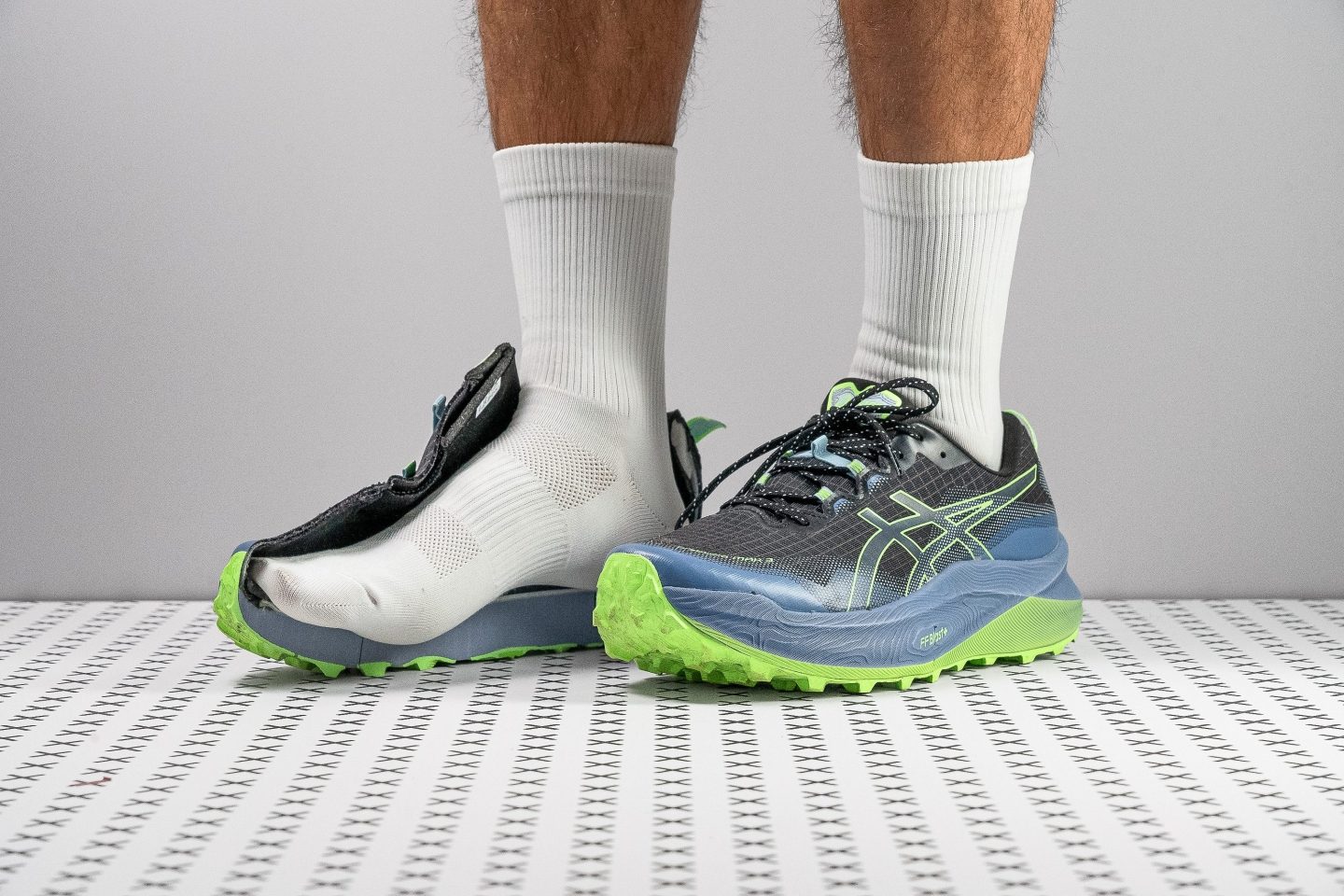
But it’s not just a matter of timing. Trail running differs from road running in key ways: ground feel becomes more important, softer terrain demands less shock absorption, and many runners prefer a shoe that offers more proprioception and control on uneven surfaces.
That said, brands are now launching maximalist trail options like the New Balance Fresh Foam X More Trail v3 or the ASICS Trabuco Max 3, both offering ultra-high shock absorption. And that’s perfectly fine for us as long as brands also continue to release grounded, low-profile models so runners have real choices and aren’t boxed into one style.

But, what should you choose? From our perspective, most trail runs are more enjoyable and controlled in a shoe with a non-maximalist shoe, like the NNormal Kjerag or the Hoka Speedgoat 6. It gives better feedback on technical descents and sharper turns. But if you’re racing a 100K ultra on smooth-and-easy terrain, a maximalist trail shoe might be the better choice.
Do carbon plates affect shock absorption?
Carbon plates don’t directly boost shock absorption, as they’re primarily designed to enhance energy return, propulsion, and stability. However, they do influence how impact forces are distributed across the shoe during landing.
In most plated models, the foam surrounds the plate—both above and below—and it’s this foam that manages impact dampening. The plate mainly stabilizes the ride and improves toe-off mechanics rather than absorbing shock itself.
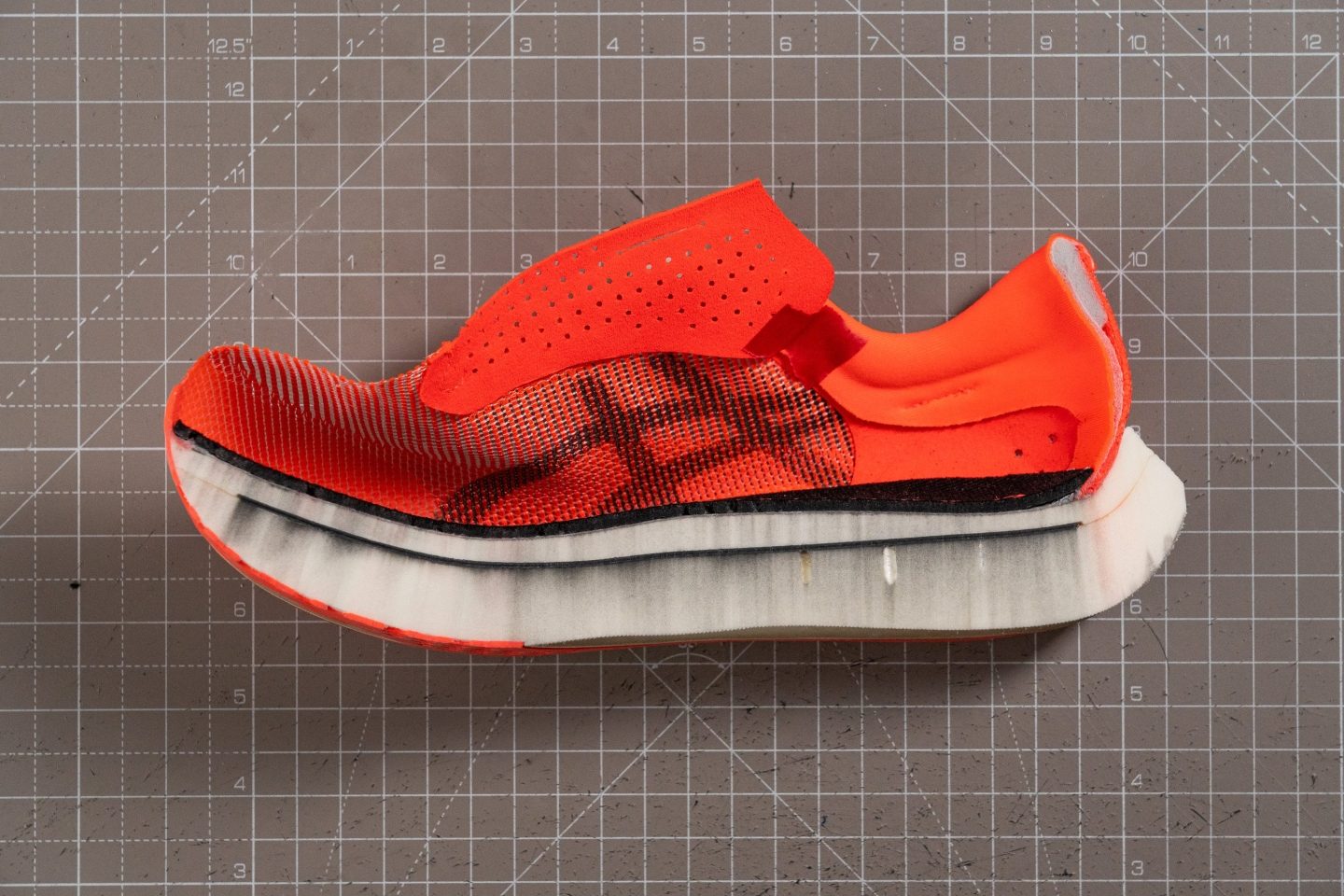
That said, carbon plates can slightly reduce perceived softness, especially in models with stiff, full-length plates positioned closer to the foot, like the ASICS Metaspeed Sky Paris shown above. On the flip side, they also help prevent bottoming out by spreading forces across a wider surface, which indirectly boosts comfort and reduces peak impact. So while the plate doesn’t absorb shock, it definitely shapes how the cushioning behaves under load.
How we measure shock absorption in the lab
To measure how much impact a shoe can absorb and how well it protects your legs from that hard, repetitive pounding, we use the ASTM F1976 standard, just like we do for energy return. We drop an 8.5kg mass from 5 cm and analyze the displacement curve, visible in our lab visuals. We really think that this method is the most dependable for testing shock absorption.
We run 30 controlled drops in both the heel and forefoot, always on the same precise spots for every shoe. The first 25 prepare the foam by simulating break-in, while drops 26 through 30 are averaged to get the final result. Each drop is spaced 2 seconds apart to ensure the foam resets properly between impacts, giving us consistent lab data for every shoe we evaluate.
And instead of flooding you with raw numbers, we built our own easy-to-understand Shock Absorption scale (SA) to make comparisons simple. We believe that every runner should have clear, straightforward data to make better choices.
Marketing promises vs. lab-tested reality

What we enjoy most about lab-testing running shoes (and paying for every single pair ourselves) is how it keeps us completely unbiased. You get pure, unfiltered, straight-from-the-lab data without any sweeteners.
This makes our setup perfect for calling out marketing claims that don’t hold up. Let’s be honest... every brand says their latest update is “more protective,” “bouncier,” or “softer than ever,” but that’s often not the case.

Take the ASICS Gel-Nimbus 25, for example. Their press release stated:
“The PureGEL™ technology which is not visible from the outside is strategically integrated in the midsole to deliver enhanced shock absorption and smoother transitions. Designed to provide improved underfoot comfort, the shoe comes with new lightweight and energetic FF BLAST™ PLUS ECO cushioning, featuring 20% more foam compared to previous iterations.”
In our lab, we found solid shock absorption at 133 SA, so that part held up. But the energy return was only 47.5%, which is clearly below the current lab average. So, the bounce didn’t quite match the hype.
Now flip the script with another shoe. Nike heavily promoted the Invincible 3 with quotes like:
“With ZoomX foam, when you’re bouncing and you’re hitting the foam, it’s like touching the softest memory foam mattress you could get.”
Yet we measured just 95 SA in the forefoot, noticeably lower than average. That said, the energy return was quite good, so in this case, the roles were reversed compared to the Nimbus.
What the future holds for shock absorption
Running shoes have gone through a massive transformation since 2013, after decades of relatively slow progress. The turning point came with the introduction of TPU and PEBA foams, along with breakthrough processes like nitrogen infusion that improved EVA foams. These innovations redefined shock absorption and energy return across the board.
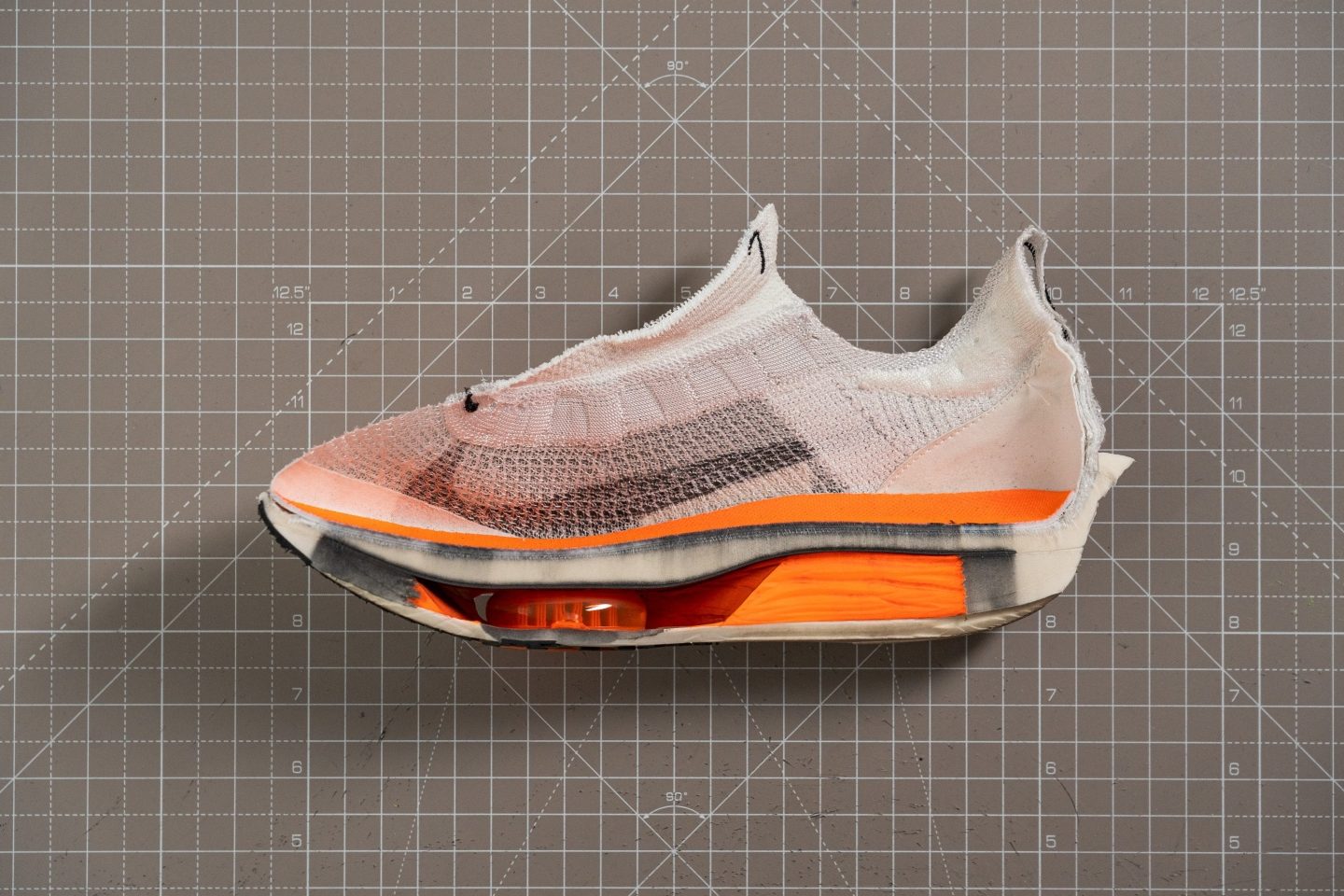
However, we believe that (just like with energy return) shock absorption is unlikely to evolve dramatically over the next decade. The industry seems to have hit a point where progress will come in smaller, incremental steps rather than big leaps, similar to the recent shift from PEBA to A-TPU.
When it comes to shock absorption, we expect improvements in durability and temperature resilience to take the spotlight, as those are the weaker aspects right now. But the real game-changer is here: How can brands deliver the same impact protection with lighter materials or thinner midsoles and less weight? If someone manages to pack 40 mm of today’s shock absorption into a next-gen 20-mm slab of foam, the possibilities for new shoes are endless.
